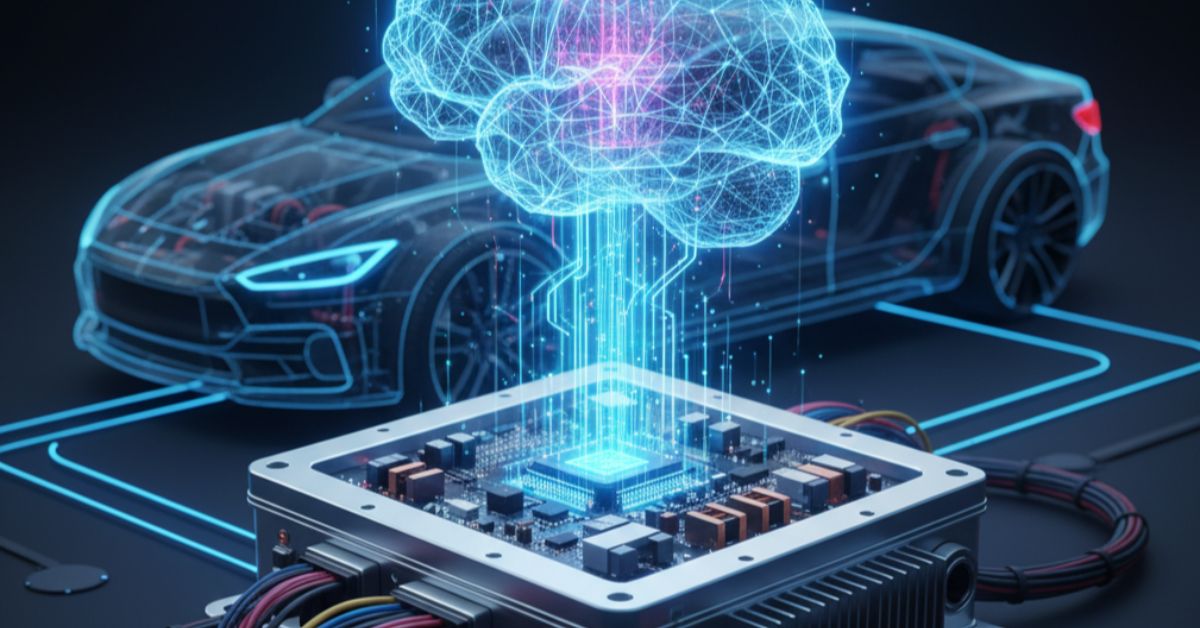When you press the accelerator in an electric car, you feel a smooth, silent surge of power. Have you ever wondered what makes that possible? It’s not just the battery or the motor—it’s the unsung hero called the EV motor controller.
Think of it as the brain of your electric vehicle. Just like your brain tells your muscles how to move, the motor controller tells the electric motor how to run. It manages everything from your car’s speed to its efficiency. Let’s break down how this amazing piece of technology works.
What Exactly is an EV Motor Controller?
In simple terms, an EV motor controller is an electronic device that acts as a powerful and intelligent switch. Its main job is to take direct current (DC) power from the car’s high-voltage battery and transform it into the precise type of power the motor needs to run.
It processes signals from your accelerator pedal, the brake, and various sensors to decide exactly how much power to deliver to the motor every millisecond. This ensures your EV drives smoothly, efficiently, and responsively.
The Magic of Regenerative Braking
One of the coolest features an EV motor controller manages is regenerative braking. When you slow down or brake, the controller reverses its role. It turns the motor into a generator, capturing the vehicle’s kinetic energy and converting it back into electricity to recharge the battery. It’s like getting a small battery refill every time you stop, which helps extend your driving range!
What’s Inside? The Key Components
A motor controller is a complex piece of engineering, but its main parts can be simplified:
- Power Electronics: These are the high-speed switches (like IGBTs or SiC MOSFETs) that handle the heavy lifting of converting power.
- Microprocessor: This is the smart part of the brain. It runs advanced algorithms to control the motor with precision.
- Gate Driver: This component acts as an amplifier, ensuring the switches get enough power to turn on and off correctly.
- Sensors & Communication: Constant communication is key. The controller uses systems like the CAN bus to talk to the rest of the vehicle, ensuring everything works in harmony.
A Quick Guide to Different Types of Controllers
Not all electric motors are the same, so they need different types of controllers. Here’s a simple overview:
| Type of Controller | Best For | Key Things to Know |
|---|---|---|
| AC Induction Motor Controller | Ruggedness and reliability | Known for being tough and dependable, though they can require precise control. |
| Brushless DC (BLDC) Controller | Efficiency and precision | A popular choice for modern EVs, offering great efficiency and smooth operation. |
| Permanent Magnet Synchronous Motor (PMSM) Controller | Top performance and energy savings | Offers excellent performance and energy efficiency, making it a top choice for many electric cars. |
What Makes a Great EV Motor Controller? Key Features
When selecting or evaluating a motor controller, engineers and enthusiasts look for several key features:
- Power Rating & Voltage: The controller must match the power and voltage of the motor and battery. Too much power can cause damage, while too little will make the car feel sluggish.
- Regenerative Braking Support: As mentioned, this is a must-have feature for improving range and efficiency.
- Communication Protocols: The controller needs to speak the same language as the car, usually through a system called the CAN bus, for seamless integration.
- Thermal Management: Controllers get hot. An effective cooling system (liquid or air) is essential to prevent overheating and ensure reliability.
- Protection Systems: A good controller has built-in safeguards against overvoltage, overcurrent, and short circuits to protect the entire powertrain.
Beyond Cars: Where Else Are EV Motor Controllers Used?
This amazing technology isn’t just for electric cars! You can find EV motor controllers powering all sorts of electric mobility solutions:
- Electric Bicycles (E-bikes): They give you that helpful boost when pedaling up a hill.
- Electric Scooters: They ensure a smooth and responsive ride through city streets.
- Electric Buses and Trucks: They scale up to power larger commercial vehicles.
- Electric Boats: They provide quiet, eco-friendly thrust on the water.
The Future of EV Motor Controllers
The technology behind motor controllers is always advancing. Here’s what’s coming next:
- Smarter and More Efficient: New materials like Silicon Carbide (SiC) are making controllers even more efficient, which means more range from your battery.
- Increased Integration: Future controllers will be more compact and might control multiple motors or systems at once.
- Advanced Algorithms: Sophisticated control methods like Field-Oriented Control (FOC) are becoming standard, providing smoother operation and more torque.
Conclusion
The EV motor controller may be hidden from view, but it is fundamental to the electric driving experience. It’s the sophisticated brain that translates your simple commands into smooth, efficient, and powerful motion. As this technology continues to evolve, it will help make electric vehicles go farther, perform better, and become even more integrated into our clean energy future.











